Bitcoin price tumbled today after new US inflation data left investors wondering how long the Fed’s rate hikes will last. Crypto expert Kyle White examines the background to this drop.
Why has the Bitcoin price dropped today?
cryptocoin.com As you follow, the bullish momentum seems to have subsided, which initially pushed the BTC price to $25,000 2023 highs on February 16 and February 20. The stagnation in the bullish momentum appears to be due to higher-than-expected US inflation data, the likelihood of the Federal Reserve continuing to raise higher interest rates, and large amounts of long liquidations.
The contraction in Bitcoin price follows the market-wide decline, and analysts fear that the crypto market continues to face significant dangers from the US Federal Reserve’s interest rate decisions. Let’s take a closer look at the factors that affect Bitcoin price today.
Stocks tumble on high inflation data
Stocks and Bitcoin fell after the Bureau of Economic Analysis (BEA) released its Personal Consumption Spending (PCE) report on Feb. 24, which showed inflation rose 5.4% year-on-year in January. Core inflation, one of the Federal Reserve’s favorite tools for measuring inflation, rose 4.7% compared to January 2022.
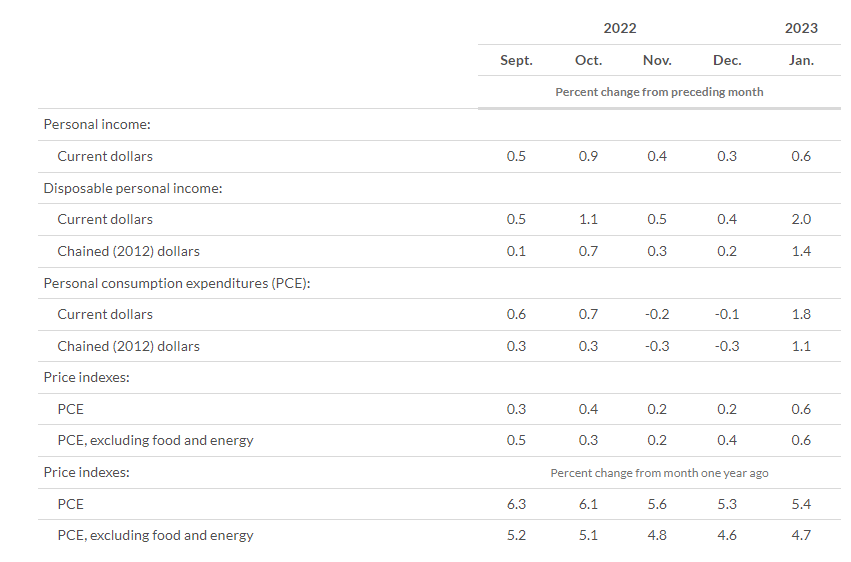 PCE price index / Source: BEA
PCE price index / Source: BEAWhile the correlation between Bitcoin and stocks hit its lowest level since 2021 on February 22, Bitcoin price continues to be closely correlated with stocks and the stock market. Investors have previously expressed strong concerns about an impending potential recession in the US economy.
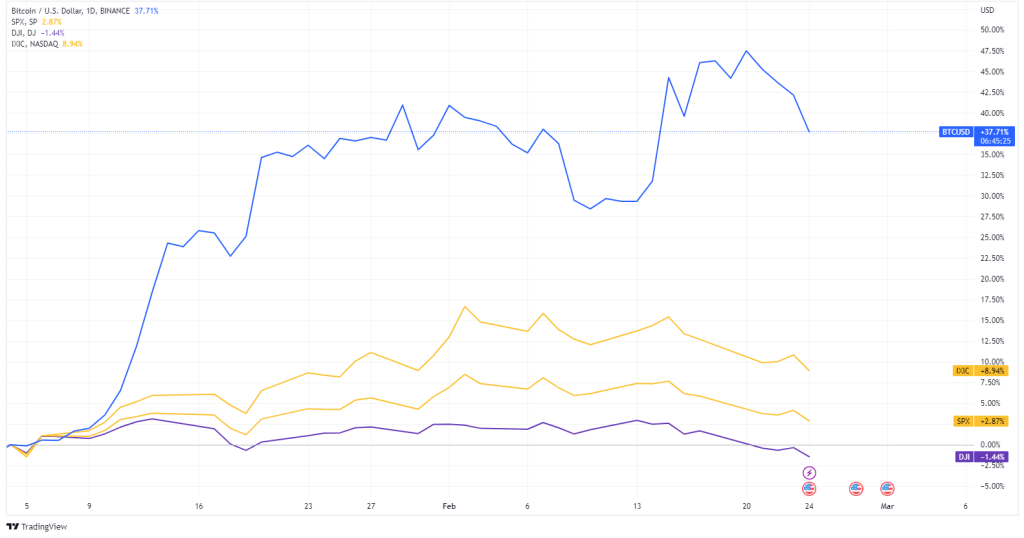 Bitcoin, Dow Jones Index, Nasdaq and S&P 500 / Source: TradingView
Bitcoin, Dow Jones Index, Nasdaq and S&P 500 / Source: TradingViewSome analysts believe that Bitcoin’s current price represents a cross-generational buying opportunity at current levels, while others believe that BTC’s close correlation with the US dollar index (DXY) and equities is reflected in price weakness to maintain the $24,000 level. Bitcoin price is reacting to the market consensus expectation that inflation is not yet under control. This is because the Fed continues to raise interest rates.
Rising interest rates in the US and abroad affect BTC price
The PCE report is the Fed’s favorite tool for measuring inflation. And as Fed Chairman Powell still aims to achieve 2% overall inflation, further rate hikes are expected. Inflation was the determining factor in raising interest rates. To combat inflation, President Powell may not be able to change his aggressive rate-raising strategy. The PCE report leads the market to speculate that a 0.5% rate hike is possible at the FOMC meeting on March 22.
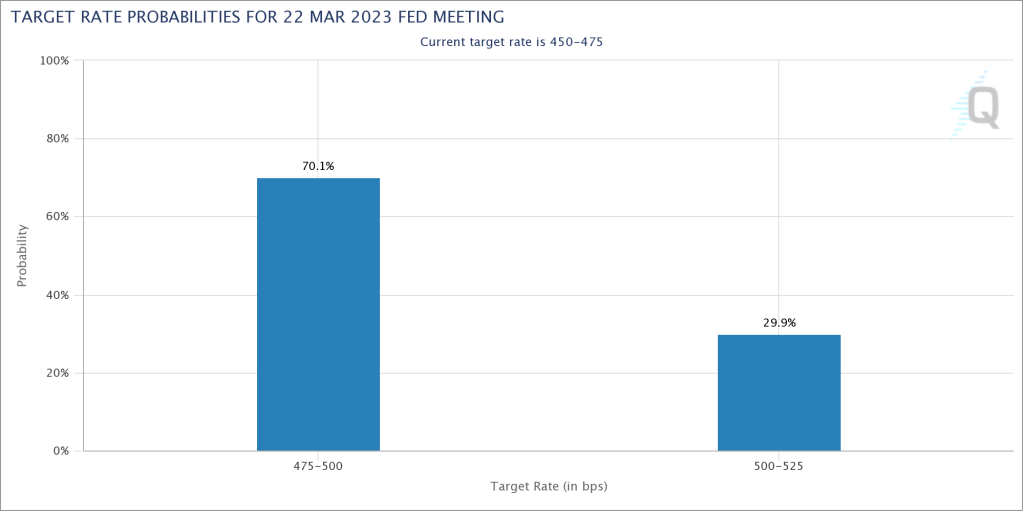 Potential for rate hike / Source: CME Group
Potential for rate hike / Source: CME GroupBehind the persistently sticky inflation, some analysts believe Bitcoin has entered a cold winter and the price may continue to see volatility leading to the FOMC. On February 24, over $95 million in Bitcoin long positions were liquidated within 5 hours. When BTC longs are liquidated without buying pressure from trading volume, the Bitcoin price is negatively affected. China’s recent monetary easing has not prevented BTC longs from being liquidated, while injecting $92 billion of liquidity into the Chinese economy.
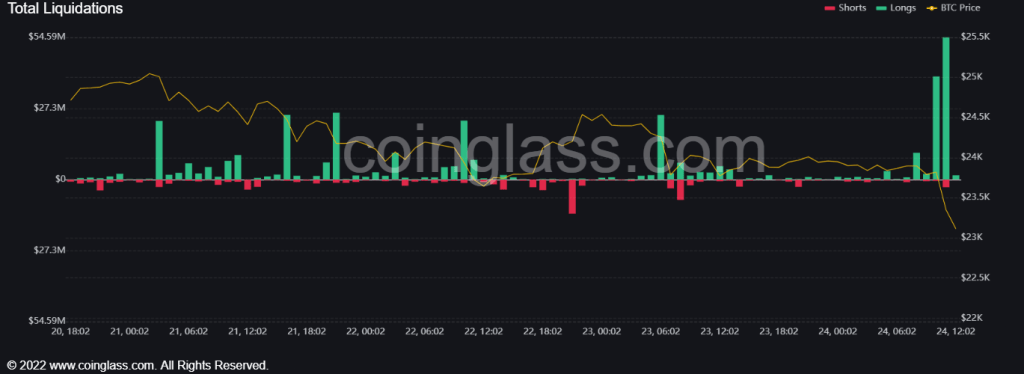 BTC liquidations / Source: Coinglass
BTC liquidations / Source: CoinglassIs there a chance for Bitcoin price to reverse course?
On January 23 and January 24, the Bitcoin futures market saw $230 million liquidated in long positions. This put more pressure on the BTC price. When BTC longs are liquidated without buying pressure from trading volume, the Bitcoin price is negatively affected.
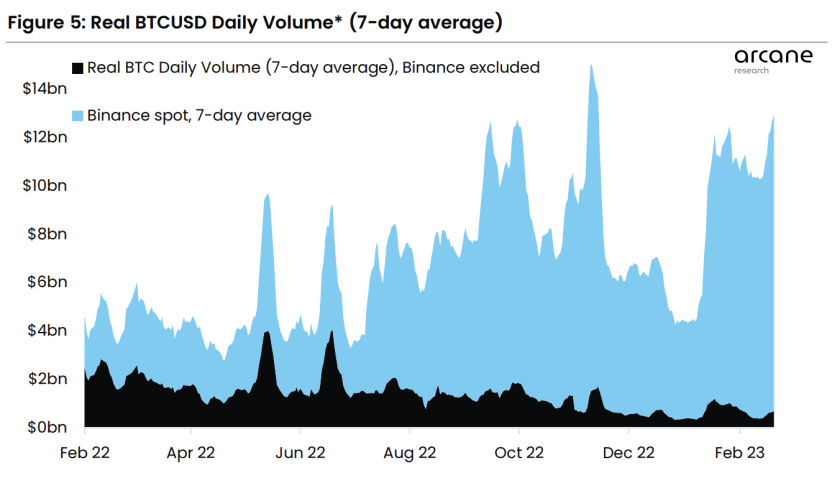 Real BTC-USD Daily Volume / Source: Arcane Research
Real BTC-USD Daily Volume / Source: Arcane ResearchThe recent increase in Bitcoin trading volume may be due to Binance removing transaction fees. Vetle Lunde, senior analyst at Arcane Research, made the following assumption from the data:
However, volumes are still concentrated on Binance after Binance removed its trading fees. Volumes on other spot exchanges are well below January’s highs of $680 million, as Binance’s volume still represents 95% of daily BTC spot volume.
If this is the case, it means there is no major buying pressure pad for Bitcoin long liquidations leading to further declines. With the recent actions of the Securities and Exchange Commission (SEC) against Binance, more assets are flowing through the exchanges.
Short-term uncertainties in the crypto market do not seem to have changed the long-term outlook for institutional investors. According to Robin Vince, CEO of BNY Mellon, a survey commissioned by the bank revealed that 91% of institutional investors were interested in investing in tokenized assets in subsequent years. CME, a leading vehicle for institutional investors’ exposure to Bitcoin, has seen its dominance increase in 2023. CME’s open interest on the future of Bitcoin has increased by 8,000 BTC since February 17.
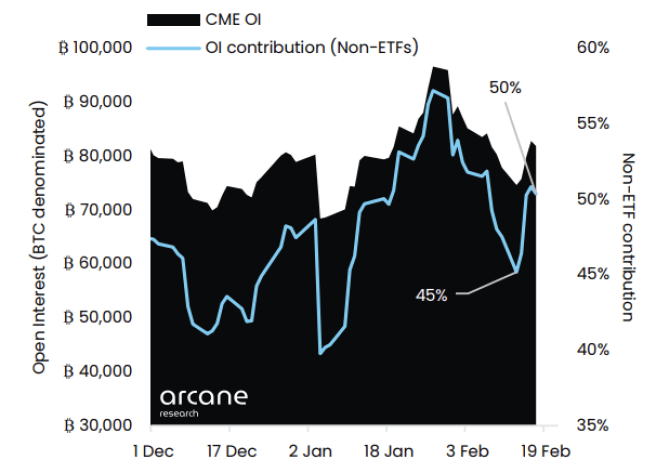 CME BTC futures open interest / Source: Arcane Research
CME BTC futures open interest / Source: Arcane ResearchThe data shows that CME BTC options also represent the majority of Bitcoin’s open interest.
Futures premiums are rising.
CME's basis sits at 8.7%, the highest since Nov 2021, trading at a premium to offshore futures' 6.3%.
CME also accounts for 68.2% of the BTC futures market, excluding perps. The futures dominance offshore has fallen steadily throughout the year. pic.twitter.com/wxxiCJNh9H
— Vetle Lunde (@VetleLunde) February 24, 2023
In the short term, concerns are high about the Bitcoin price being directly affected by macroeconomic events. Also, potential interest rate hikes at the next FOMC are likely to have some impact on the BTC price. In the long run, market participants expect the Bitcoin price to rise, especially as more banks and financial institutions turn to digital money for payment even amid the chaos.







